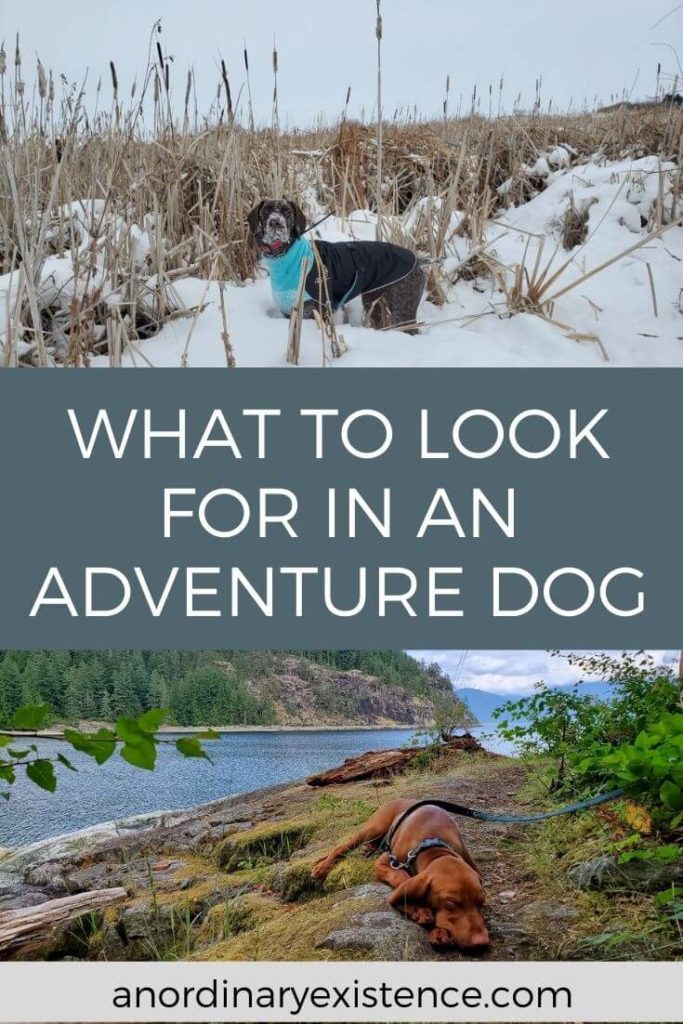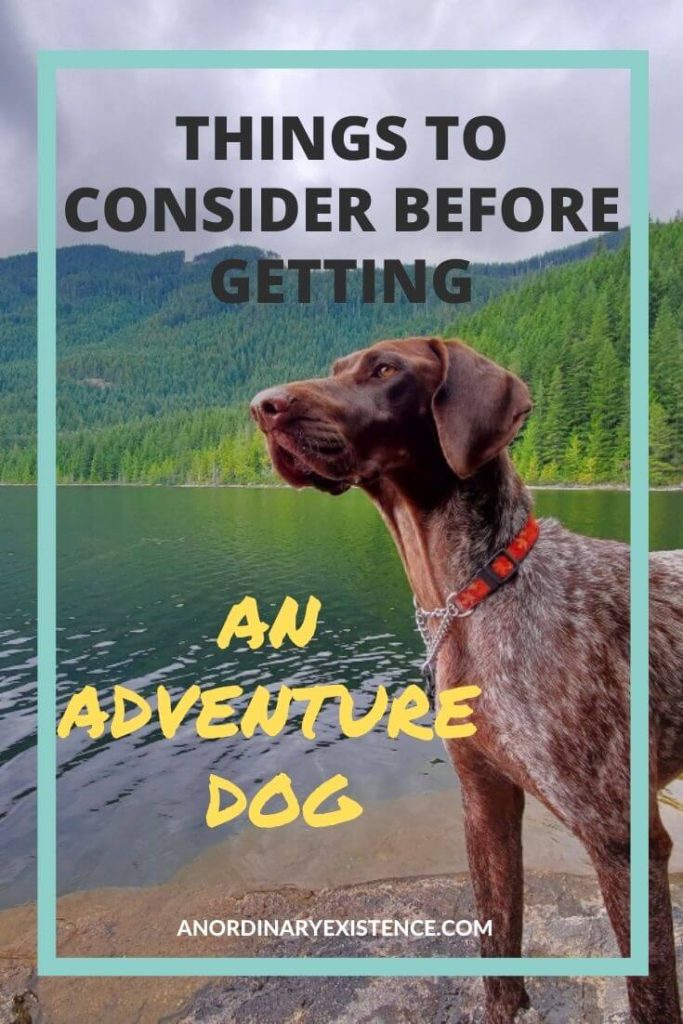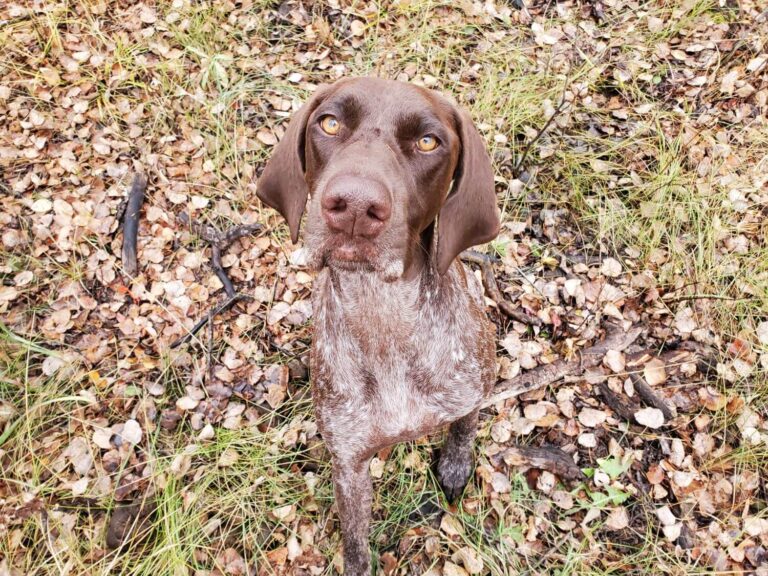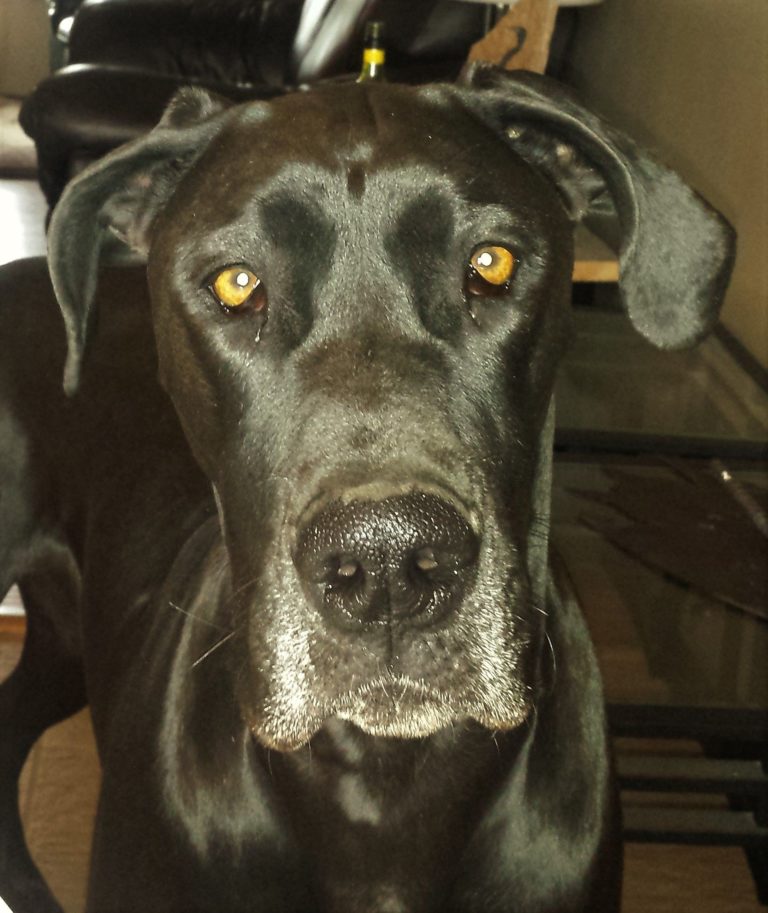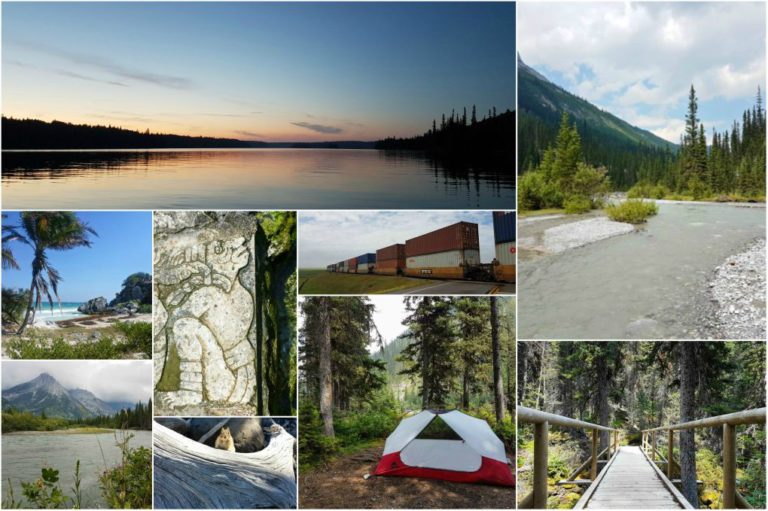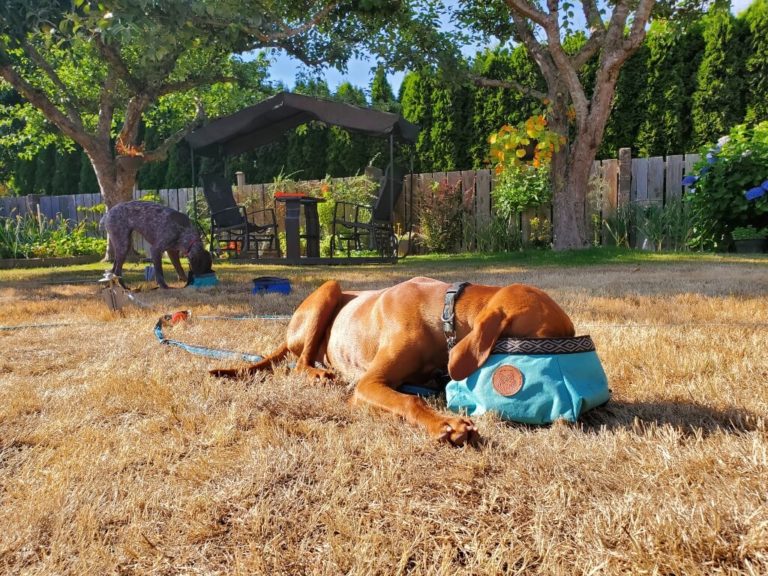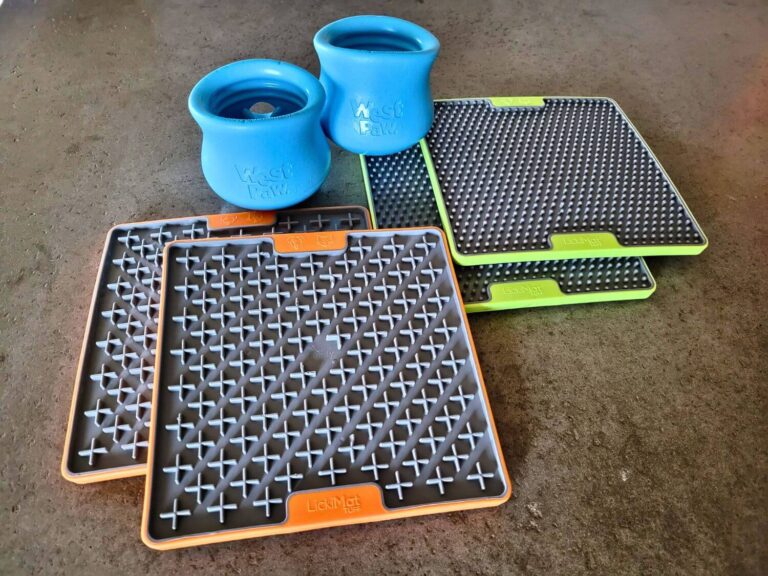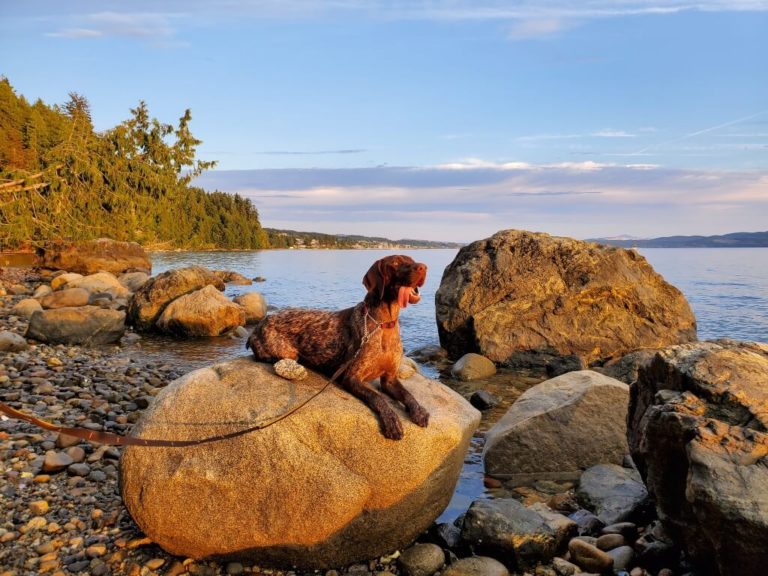WHAT TO CONSIDER WHEN LOOKING FOR AN ADVENTURE DOG
Are you thinking about adding a canine companion to your adventure-filled life? There are a few things you’ll want to consider before you start the search for your perfect pup.
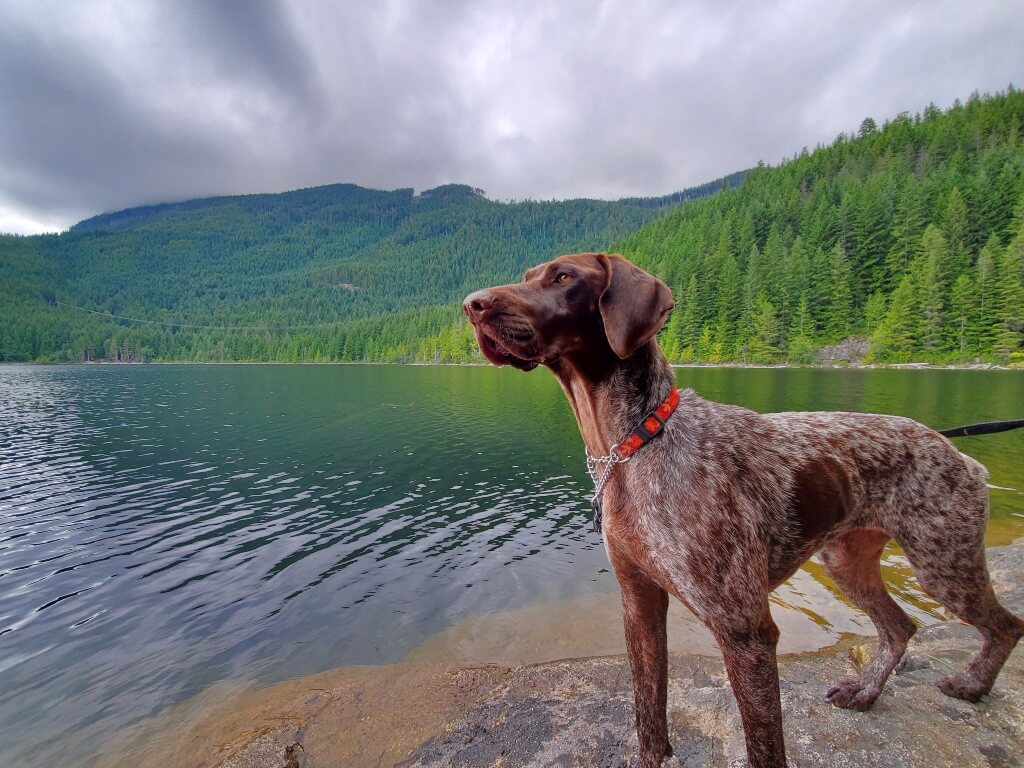
Dogs are similar to people in that they all have unique personalities, preferences, and abilities. Whether you’re looking to do the occasional day hike, weekend camping trips, vanlifing it for the long haul, kayak camping for weeks on end, or all of the above, you’ll want to make sure you have a dog that is going to be able and willing to tag along for all the fun.
This post may include affiliate links. As an Amazon Associate I earn from qualifying purchases. Find more info in my privacy policy.
I’ll preface this post by saying that dogs are adaptable. If you’re new to the world of dog ownership, you’ll likely be surprised by how resilient they are. There are no hard and fast rules about which breed is suitable for what sport or at what age a dog should or shouldn’t be doing certain activities. In fact, you’ll find plenty of dogs out there breaking stereotypes and preconceived notions. It really comes down to the individual.
However, certain characteristics should be considered. The points I share below are generalizations, there to help you narrow down what you’re looking for in a dog and to remind everyone that there are many aspects of dog ownership that need to be considered before you add a furry friend to your family. By taking the time to think through these now, you’re helping to ensure that you and your dog will have a happy, healthy, adventure-fueled life together.
Let’s dive in.
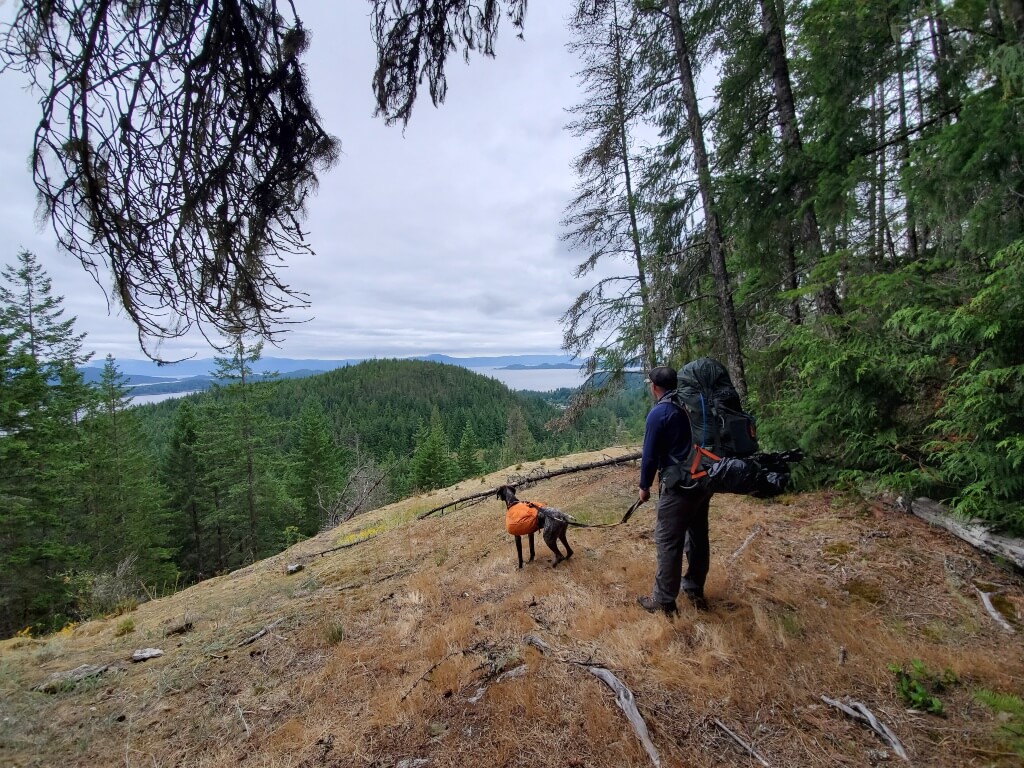
SHOULD I GET MY ADVENTURE DOG FROM A RESCUE OR A BREEDER?
This is a debate that can quickly devolve into a disaster, a truth to which anyone who has read comments on social media posts about the matter can attest. I’ll get into my full thoughts on the topic in a separate post but as far as it relates to your search for an adventure dog, know that either is fine. There are pros and cons to both.
Adopting a rescue/rehomed/shelter dog provides a home for an animal who needs one. You can get some really amazing dogs who are well-placed based on their personalities and can even find breed-specific rescues if you have a preference. Potential downsides to adopting are cases in which rescues place dogs inappropriately, dogs who have behavioural issues due to poor breeding or past experiences, and the fact that you often have very little background info. Adopting a puppy can be a bit of a crapshoot if the parents aren’t known, as temperament and adult size could be anyone’s guess. If you’re willing to be flexible and deal with any potential unknowns, this could be an excellent option for you.
Buying a dog from a responsible breeder also has its pros and cons. Buying from a kennel means you’ll have more information about the dog’s history and bloodlines. They are bred for temperament and traits, such as tracking or pointing in hunting dogs. If you’re looking for a specific skill or quality, this could be a plus for you. Breeders will also provide support in the form of health guarantees, training advice, and a safe option for surrendering the dog if ever needed. Most people would look to breeders for puppies, but they sometimes have adult dogs available as well. One downside is that they can be hard to find. Responsible breeders only have litters every so often, so you could be looking at being placed on a waitlist for months or even years. You’ll also have to take time to source out a genuinely responsible breeder. Look for things like health testing and guarantees, show or trial titles, open communication, references, and being more interested in if you’re a good fit for their dogs than anything else. You can find more tips on finding the right breeder in this article from the CKC. If you’re looking for a specific breed or trait and want ongoing support from a knowledgeable breeder, this could be the right option for you.
Whether you go with a rescue or a breeder, a purebred or a mix, keep in mind that dogs are individuals, and you could end up with any combination of health traits, physical abilities, and temperaments no matter what.
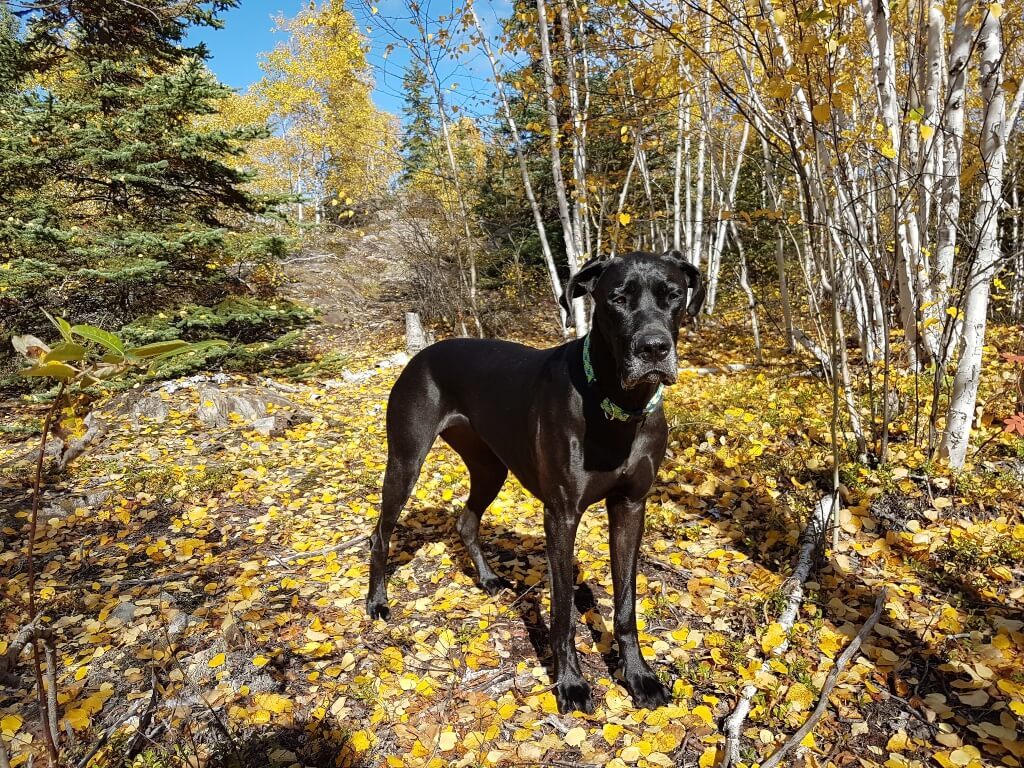
SHOULD I GET MY ADVENTURE DOG AS A PUPPY OR AN ADULT?
Getting a puppy has definite upsides. You can train them how you want from the beginning. You have the chance to socialize them appropriately at a young age. And they are just so stinkin’ cute! However, training a puppy is no joke, and they may put a damper on your fast-paced adventuring for a bit. As important as it is for puppies to get out and experience new things, you’ll want some structure and routine to help them learn the basics. You’ll also have to take it easy on the exercise until they are around 12-18 months (depending on the dog’s size) to allow their growth plates to close. Which means no week-long sufferfests in the mountains until they’re ready for it. Even your day hikes will be short and sweet for a while. But, when they are good to go, you can have them trained and socialized to suit your lifestyle.
Getting a dog as an adult could mean they already have their basic training down, they’re past the puppy chaos stage, are physically grown, and are ready to rock whatever you can throw at them. Or, it could mean you have just as much training to do as you would with a puppy. If you’re taking in an adult dog who has never been exposed to the types of experiences you’re looking to have with them, they may need time to adjust and to build up the stamina to keep up. This could be anything from toughening up their paw pads a bit to leash training to teaching them how to greet other people and dogs. You also have to consider their life cycle. Adopting a 7-year-old dog may mean you only have a few years before they start to slow down. That shouldn’t be a reason not to adopt them but planning for old age and potential health problems is important. How will you accommodate them when they can’t keep up anymore?
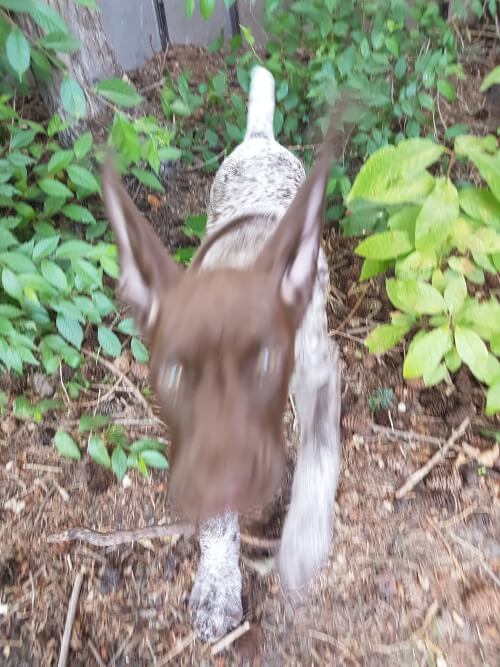
YOUR COMMITMENT TO TRAINING YOUR ADVENTURE DOG
Training is essential for all dogs but even more so for adventure dogs. If you have your pup on the trails, on the water, or in a campground, you’ll want them to know how to behave. And it’s up to you to teach them. This can be a long and sometimes frustrating process (especially for those of us with limited patience!), but it is crucial. You might luck out and get a perfect angel dog, but in reality, you’ll likely need to be committed to ongoing training for the long haul. When searching for an adventure buddy, you’re probably going to end up with a higher-energy dog. Training becomes even more critical in this case as you will need to control and direct their energy and attention, or else they will make up their own rules.
Start with obedience basics like sit, stay, heel, down, and recall. Expand from there to add things like place, leave it, leash manners, and human and animal greetings. I highly recommend finding a trainer you like and participating in group classes if at all possible. Depending on your adventure style of choice, you’ll also have to condition them to any special equipment, commands, or experiences. For example, showing them how to sit nicely in a canoe, getting them used to wearing a backpack, or teaching them direction commands for skijoring. Slow and steady socialization and exposure to different environments and experiences are so important. They’ll need to be comfortable sleeping, eating, and chilling out in various places and circumstances. Creating a bond between you and your dog is one of the best ways to help them feel safe and secure no matter what, and training is the best way to create that bond.
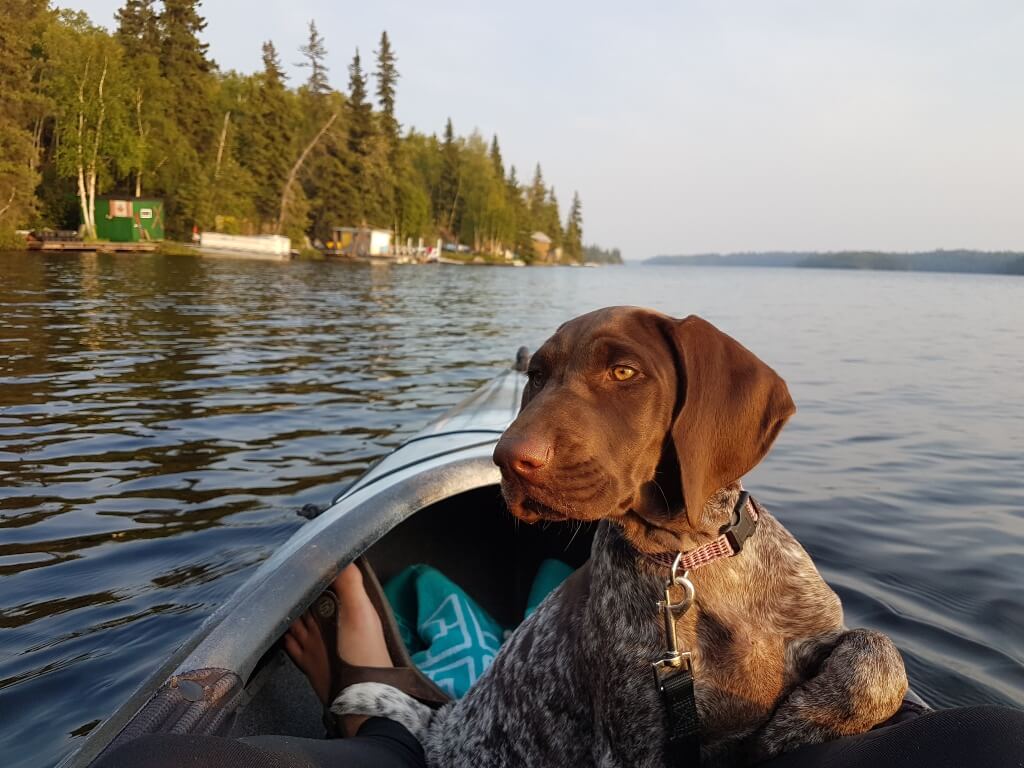
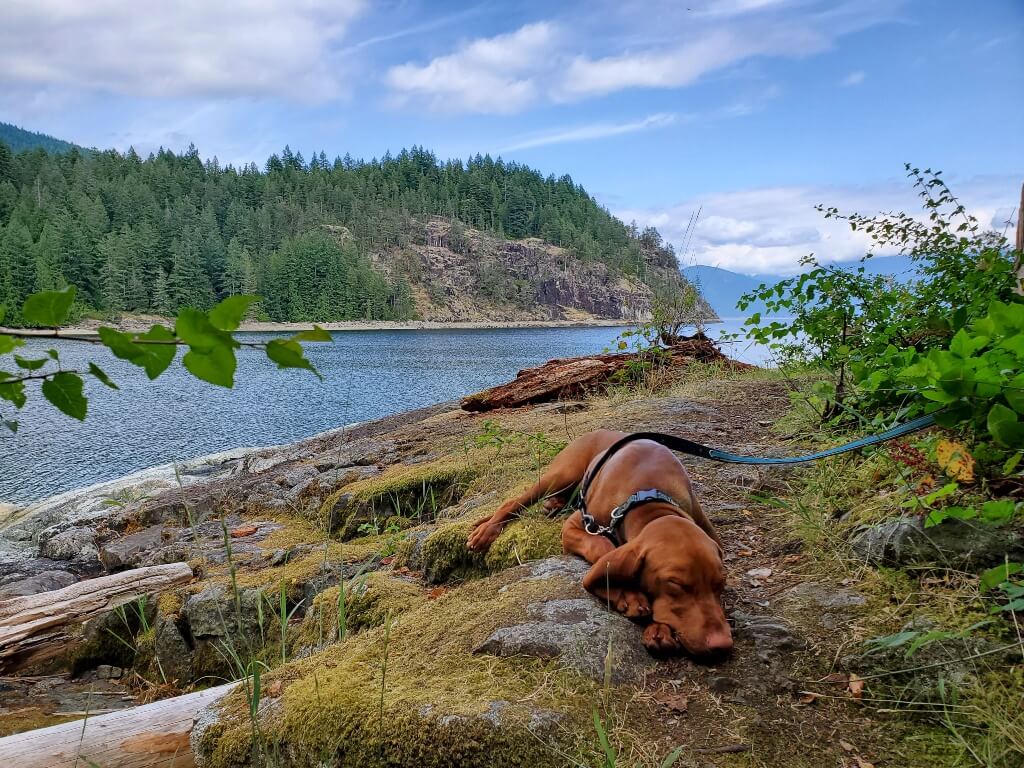
YOUR COMMITMENT TO EXERCISING YOUR ADVENTURE DOG
This may seem like a moot point. Of course, they will be getting exercise – they’re an adventure dog! You probably already have had dreams about summiting your favourite peak or setting a personal best 5K time with your dog by your side. Isn’t that enough? What many people don’t think about is what happens after the adventure is over. Some of us are limited in how often we can get out there by seasonality, work schedules, or other commitments. Your dog doesn’t care. They will still need exercise and mental stimulation even in the off-season. Especially those high-energy breeds that us adventurous souls love so much.
Plan to make time for daily walks, dog park visits, and games of fetch. Take up another activity like snowshoeing or skijoring in the winter months. Find a dog-specific sport your pooch loves like agility, fly ball, dock diving, or scent work. Not only will they need this to stay happy, healthy, and well-behaved during long weeks or months at home, keeping their activity levels up will also keep them in shape and ready to tackle the next adventure when the time comes.
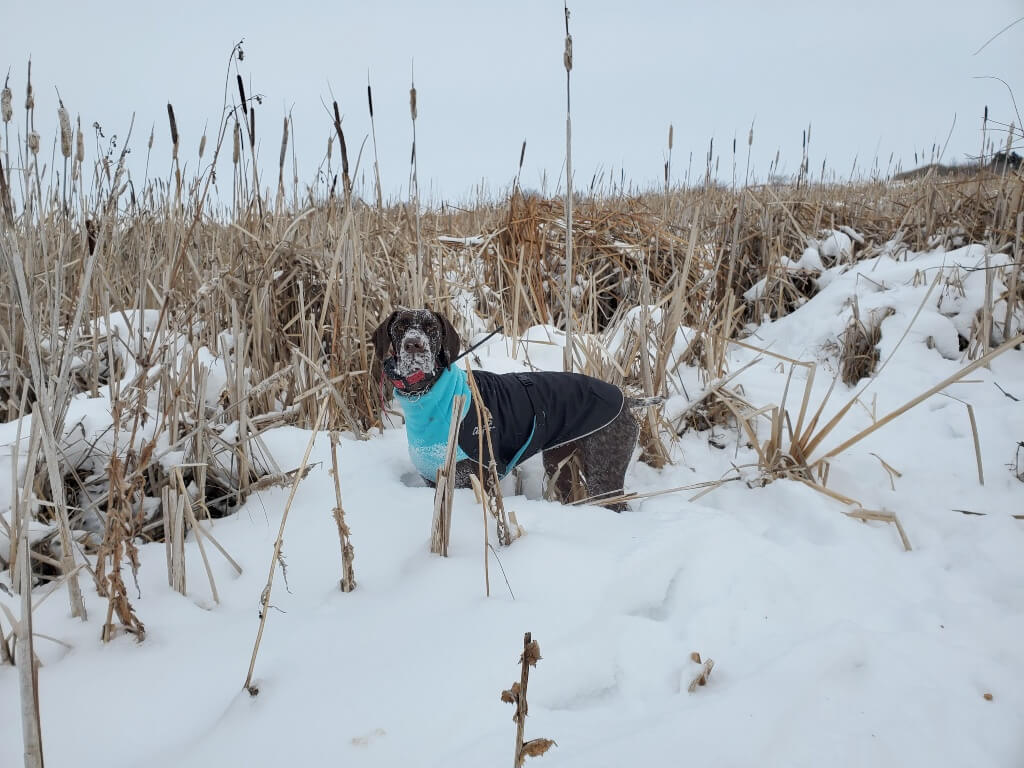
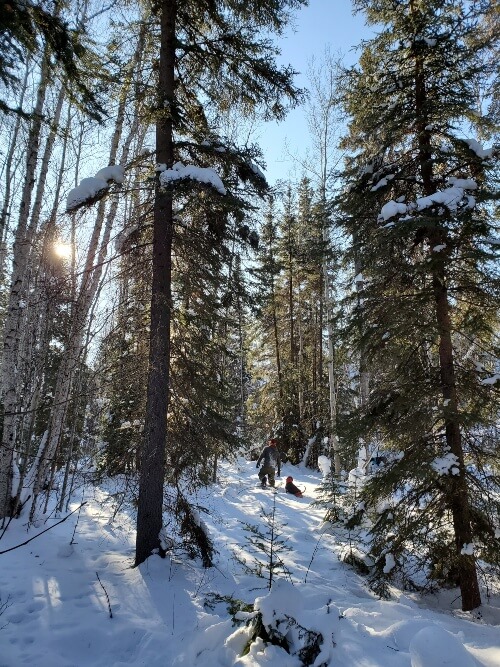
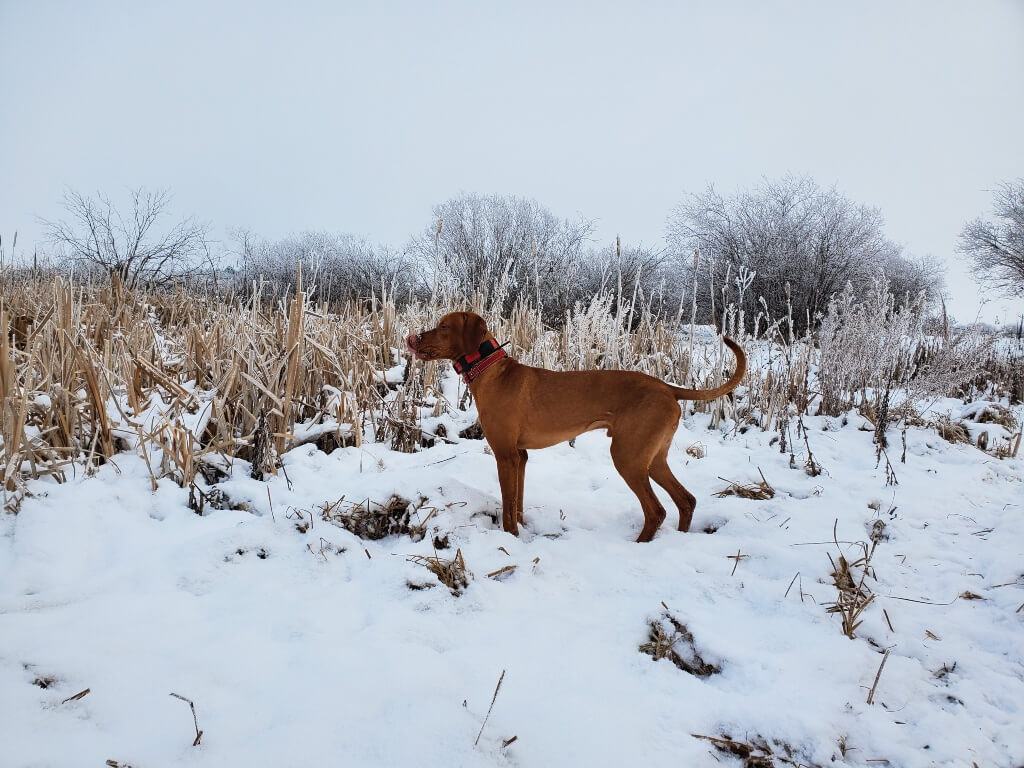
BREED-SPECIFIC CONSIDERATIONS
I’ve said it before, and I’ll say it again – every dog is an individual with a unique personality and abilities. However, their genetics will undeniably play a huge role in determining their characteristics. Here, I touch on a few breed-specific things you’ll want to think about when searching for your perfect companion.
Energy Levels. As an active, outdoorsy person, you’ll want to find a dog that can keep up with your lifestyle. A high-energy breed may be right for those always on the go. They will be able to go for days and still rock up to camp looking at you like, “why you so tired mom?” High energy breeds tend to be those historically bred for specific jobs, like hunting and herding. Setters, pointers, collies, and shepherds are some breeds that reliably end up on the high-energy lists. Huskies and Jack Russel Terriers are also notoriously full of energy. I can personally attest to German Shorthaired Pointers and Vizslas being squarely in this category as well. See my points above for more on the need for training and regular exercise for these energetic dogs. They will need time, attention, mental stimulation, and exercise no matter the weather, time of year, or what your schedule looks like.
Not every outdoorsperson needs a super high-energy dog. Most dogs will be able to keep up on occasional outings or more low-key exploits. Some of the larger breeds that tend to end up on low-energy lists like Newfoundlands, Bernese Mountain Dogs, Great Danes, and St. Bernards are generally happy to tag along on adventures. Smaller dogs like Dachshunds and many of the terrier breeds may also surprise you with their ability to keep up with the big dogs.
Any dog can be an “adventure dog,” but it is a good idea to try and match energy levels to your adventuring style. Aim for a high-energy breed if you’re looking to get out on long epic treks and willing to keep them happy in the off-season. Consider something with lower energy levels if you tend to keep your outings short and sweet or don’t want to have to worry quite so much about entertaining them when your trip calendar clears up.
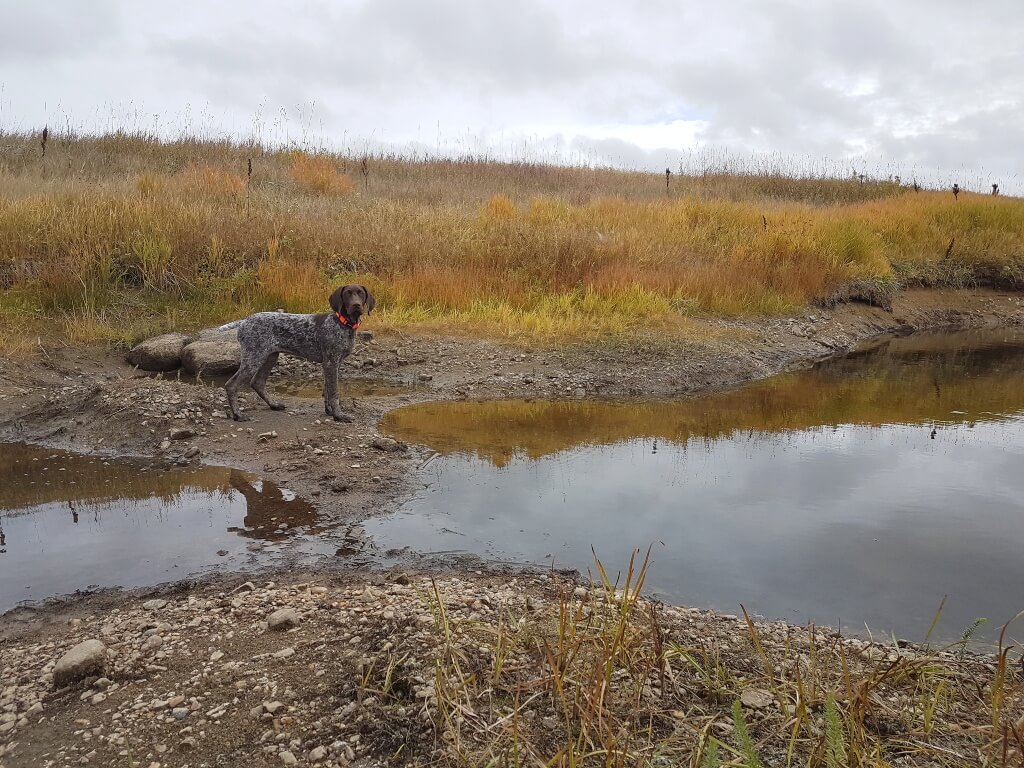
Size. When considering size, don’t worry too much about how their stature impacts their ability (small dogs can do big things too) but more about the logistics. You’ll inevitably be travelling with your dog, whether that’s just to the trailhead down the road or on an epic cross-country road trip. Do you have room in your vehicle? Where and how will they ride? Do you tent? Will you have to buy a bigger one to accommodate a large dog? Are you willing to do that? Will they fit in your kayak? If you’re looking to have a dog along for a sense of security and protection, then a medium to large size dog may be preferable. Or, maybe you want a dog small enough to fit in your backpack when you’re hiking in rougher terrain. Many factors can impact your decision on how big or small you want to go.
One other thing to keep in mind for large dogs – people are often scared of them, even if they are the most docile loveable dog in the world. It’s all too easy for non-dog people to interpret a big dog’s excited bark or overly enthusiastic greeting as full-blown aggression. Because of this, there’s almost a double standard as far as behaviour goes. Big dogs will need to have exceptional trail etiquette and manners; otherwise, you run the risk of angering your fellow trail users. Small dogs should be held to the same standard, but they often get away with a little more.
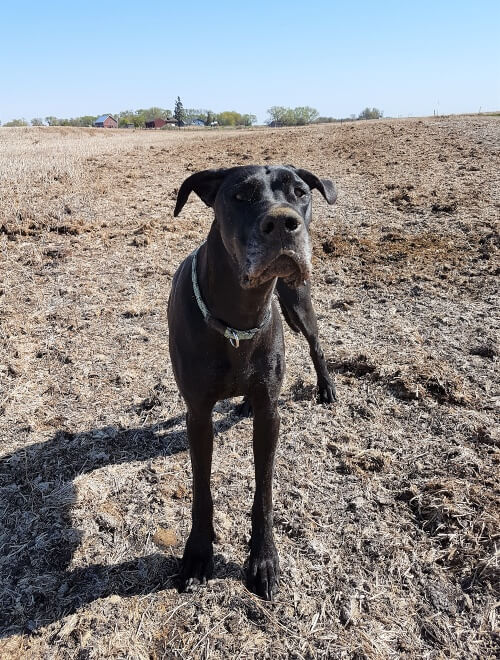
Drive or purpose. As I mentioned earlier, most breeds are bred for a particular purpose or trait. For example, hunting dogs can be bred to track, retrieve, point, tree, chase, and flush, while others are bred to herd, protect, search, pull, or provide companionship. This purpose-driven breeding has resulted in many breeds having very strong and deep-seated instincts. Hunting dogs may have intense prey drive or a strong instinct to bark excessively at the sight of wildlife. Companion animals may have a more substantial need to be with their humans and be more prone to separation anxiety. Sled dog breeds may have a tendency to pull. Trackers will want to follow every scent they find.
While training can go a long way in overcoming the traits that are more desirable in the field than on a backpacking trip, remember that you are going against nature. When researching dog breeds, pay attention to these historical characteristics and try to avoid traits that you might find difficult to overcome. Once you have your dog, try to use their instincts and tendencies to your advantage by directing that energy where you want it rather than fighting against it.
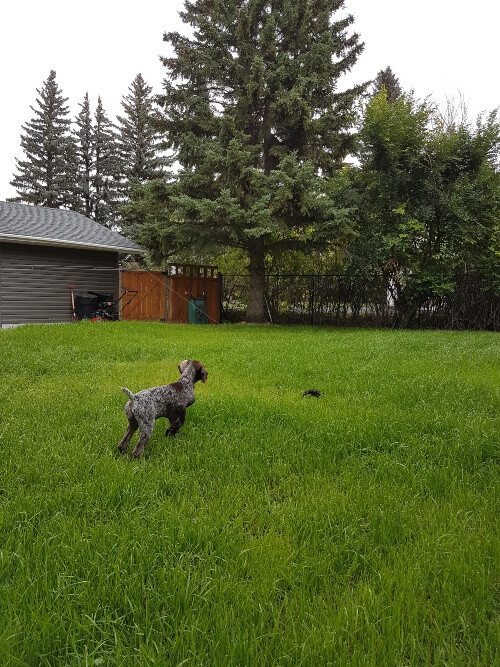
Health factors. Some breeds tend to have limiting physical characteristics or health problems that are more common. Brachycephalic dogs (the ones with the squished in faces, think: Pugs, Bulldogs, Boxers, etc.) can have difficulty breathing and a lower heat tolerance. Hip dysplasia can affect any dog but is more common among larger dogs like Great Danes, Retrievers, Labs, and German Shepherds. Eye problems, epilepsy, certain cancers, and other musculoskeletal disorders can all be hereditary and more common among certain breeds.
Of course, this doesn’t mean EVERY dog in that breed will be affected, and there are ways to lessen the chances that your dog will have problems. If you’re buying from a breeder, ask for proof of health testing and certifications for any common issues that can be tested for in breeding pairs. Research what problems are typical for the breed and learn what you can do to help avoid it developing in your dog. This may mean limiting certain activities or being extra cautious during certain life cycle stages. The chance of a potential health problem shouldn’t necessarily be enough to scare you off from getting a specific breed, but it is something you should be aware of. Don’t force a dog to do something they’re not suited for if it puts them at risk.
Adding an adventure pup to your life might just be the best decision you can make. They bring with them joy, excitement, and a whole new perspective on exploring. But it is a commitment. Taking some time to think about what type of dog is a good fit for your lifestyle will help ensure that both of you stay happy and healthy – both on and off the trail.
Do you have an adventure dog? What else would you add to the list?
